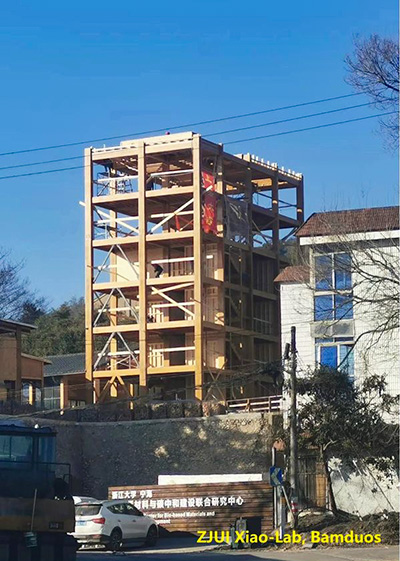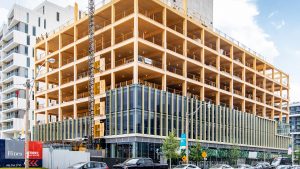When you think of sustainable building materials, engineered bamboo is not the first thing that comes to mind.
But Amir Mofidi, an associate professor of structural engineering at Brock University, is trying to change that by engineering bamboo to create bio-composite materials for construction, in particular as a structural member in highrises.
“As a person who has two decades of experience of working on advanced composites for rehabilitation of concrete structures, I said if I can use this fibre, with massive tensile strength of 400 MPa, and put it in the right bio-based matrix then that can be a really sustainable construction material,” said Mofidi.
“These days, obviously there are concerns in terms of the carbon emissions of construction industry. If you want to continue building with smaller carbon footprints we need to have more sustainable steel and concrete, which are obviously excellent construction material choices, or we need to move towards more renewable construction materials with smaller carbon footprints, like timber or bamboo.”
Mofidi received funding from the Government of Canada Natural Sciences and Engineering Research Council’s Discovery Grant to conduct the research, but the idea came to him a few years ago.
While he was an acting assistant professor at Newcastle University in the U.K., two undergraduate students approached him and said they wanted to do research relevant to their backgrounds in Hong Kong and Central Africa, areas known for the use of bamboo in construction.
“They said it’s sustainable it grows quite fast and some of the fibres can reach 400 megapascals in tensile strength,” he recalled. “I looked it up and realized that they’re right.”

In terms of timber construction, the level of supply and time required for the natural production of wood is not keeping pace with demands, Mofidi pointed out.
“If you want to use timber for everything, you’re going to face serious deforestation and at the moment our forests are currently under stress,” he said.
“We can’t build everything with timber. It’s impossible. We don’t have enough resources and in order to have sustainable timber it’s going to take between 30 to 40 years for softwood trees to reach maturity age to be harvested and used for construction purposes.”
Giant bamboo is a fast growing, strong and durable material. It comes in the form of hollow cross sections that can be as wide as 250 millimetres and can grow to minimum heights of three to four metres.
Some species can grow as fast as one metre a day and may only need four to five years before they are mature enough to harvest, Mofidi explained.
Bamboo’s hollow shape has limited its use in construction, but that is changing.
There are two major engineered bamboo products, LBL (laminated bamboo lumber) and Bamboo Scrimber.
LBL is produced through a process of cutting the bamboo into strips, planing (to form the strips into rectangular sections), a treatment of either bleaching or caramelizing and gluing and pressing into its desired shape.
Bamboo Scrimber is a composite produced by a simple and low-energy process of crushing, gluing and compressing dried bamboo. It is beneficial as it overcomes the natural anisotropy that occurs within natural bamboo and increases the reliability of the engineering parameters, Mofidi explained.
Bamboo has been used in traditional architecture in China and East Asia for thousands of years.
“If we want to meet the goals of net-zero concrete by 2050 or even reaching this carbon emissions reduction by 2030 to lower down carbon emission by 40 to 45 per cent of that in 2005, we need to think of some innovative sustainable and renewable materials,” Mofidi said.
“In China they’ve been using bamboo for thousands of millennia…They are making highrises out of bamboo. Also, in developing countries, in South America, Philippines and some African nations they are building one- or two-storey buildings made of raw bamboo constructed by giant western companies such as Arup.”
Are we ready to start building with bamboo in Canada?
“The answer is that it’s a little bit premature,” said Mofidi. “But if the industry wants it, for example by forming a consortium, and benefitting from the governmental funds as well, we can reach there in less than a decade.
“We have the knowledge. We have the resources and it’s quite possible maybe in five years time…we can get there because China is already there. There is a global community of people who are working on this. It’s not something that’s out of reach.”
To deal with supply chain concerns and carbon generated from transportation, Mofidi is exploring the possibility of growing non-invasive bamboo species in a laboratory that can survive in -20C to -30C weather. He is aiming to find a species strong enough for construction that can be grown locally outdoors.
“Ultimately, we want to develop partnerships with the Niagara farming community and provide an economically justifiable crop,” he said.
Follow the author on X/Twitter .





Recent Comments
comments for this post are closed